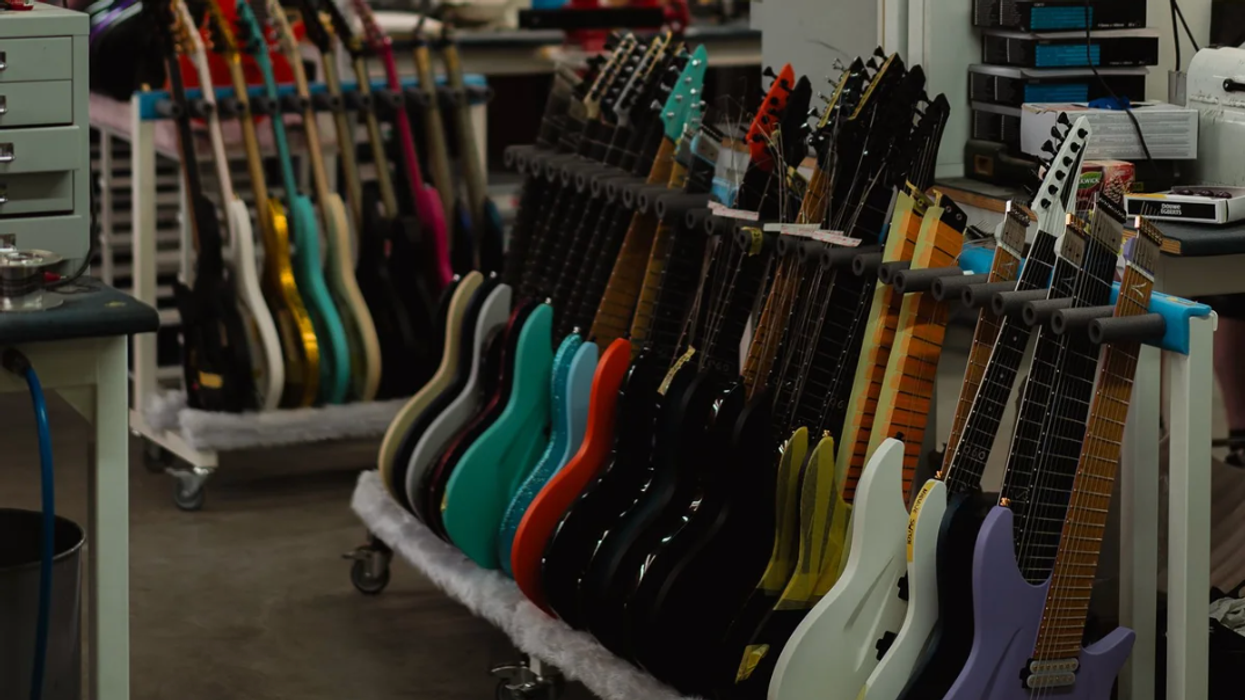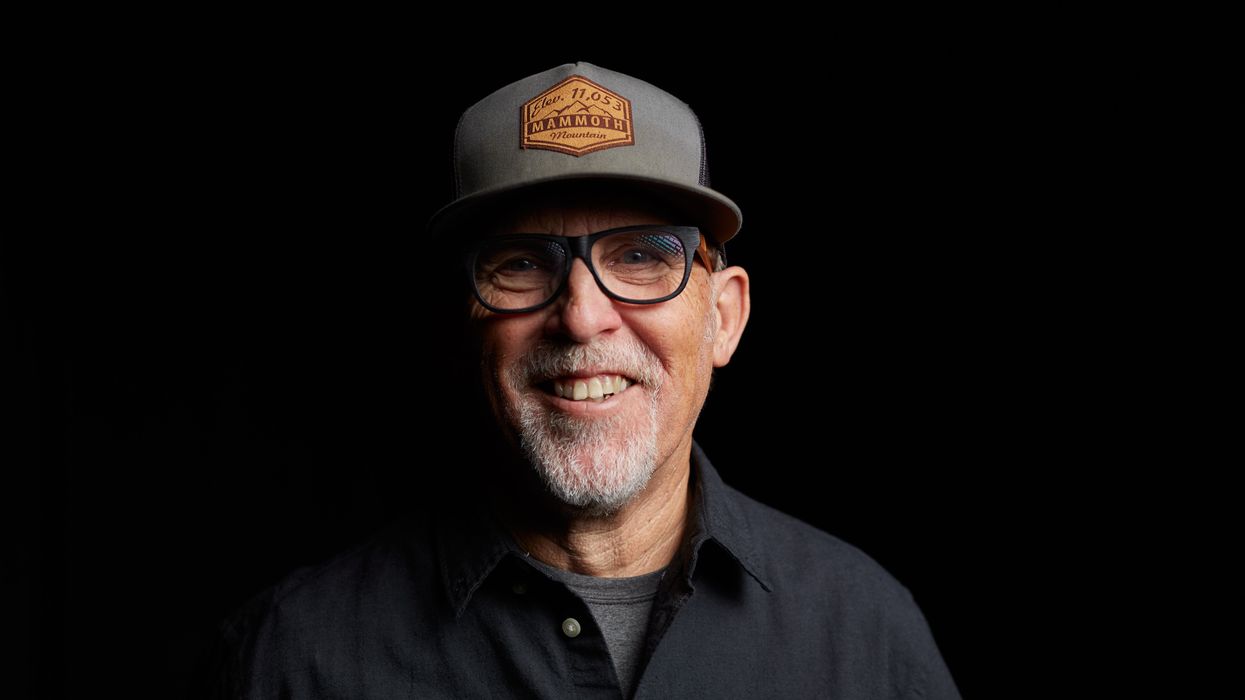Electric guitars have pushed the boundaries of design, sound, and style since their inception. The warm embrace of timeless tonewoods will always be a cornerstone of the guitar-playing experience. But although they’ve only been a minor presence historically, materials from aluminum to plastic and beyond have been a part of the electric guitar’s design since the early days.
Over the decades, and especially more recently, a wild wave of alternative-material possibilities has steadily emerged, captivating many of our imaginations with unique sonic palettes, response, aesthetics, and playability. From the pioneering experiments of the past to the cutting-edge innovations of today, this is the journey of those materials—a testament to the enduring spirit of creativity and the relentless pursuit of excellence across the guitar universe.
As early as the 1950s, Danelectro, known for its budget-friendly instruments, made waves with their Masonite bodies. These guitars’ quirky designs and lipstick pickups offer a distinctive, resonant tone and affordability that appeals to many musicians seeking something unique and familiar. Less popular, but still prevalent, National built instruments from “Res-O-Glas,” a fiberglass-like substance made by combining polyester resin and glass threads.
The 1970s witnessed a surge of experimentation. The Ampeg Dan Armstrong “see-through” guitar was crafted from transparent acrylic. Though it had its drawbacks, the guitar became a bonafide icon. “It’s a pretty dense material. It weighs a lot,” notes James Little, CEO of Aluminati Guitar Co. “But it’s what gives them that midrange—they just cut through.” Together with their futuristic look, that cutting tone captivated players as diverse as Keith Richards and Black Flag’s Greg Ginn.
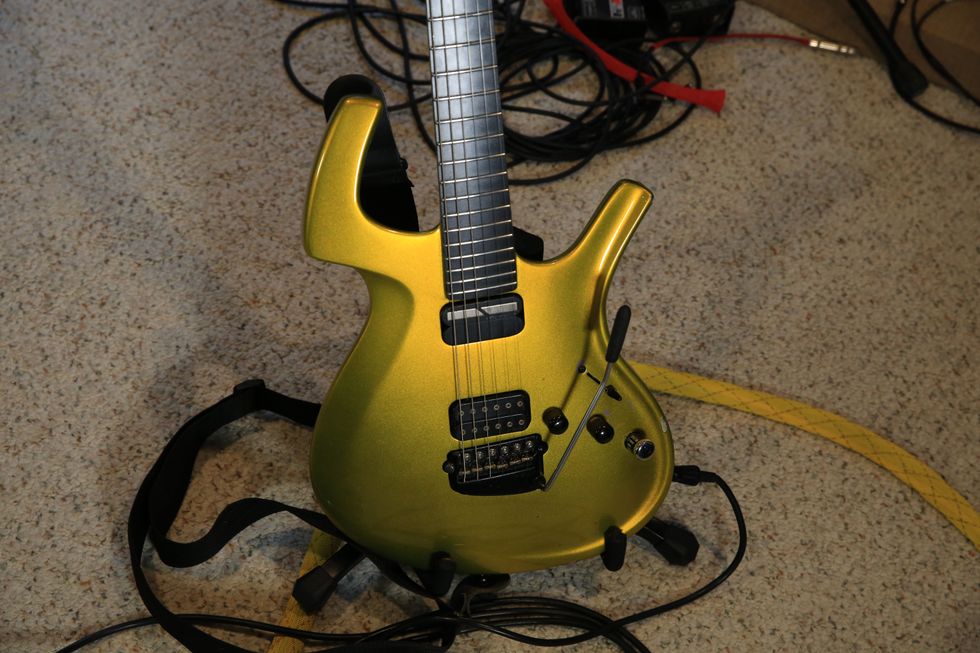
Adrian Belew’s own signature model Parker Fly, as seen on a recent Rig Rundown shoot. He’s playing the guitar on the current BEAT Tour, celebrating the classic ’80s recordings of King Crimson.
Photo by Perry Bean
While Masonite and acrylic were making headway, Veleno Guitars’ all-aluminum designs were landing in the hands of rock royalty, including Eric Clapton, David Gilmour, and Marc Bolan. The late producer Steve Albini’s Veleno even supplied the clean tones for Nirvana’s In Utero in the ’90s. Veleno wasn’t alone when it came to using metal, of course. Aluminum was used in the construction of electric instruments going back to the Rickenbacker A-22 “Frying Pan” lap steels, and Italy’s Wandre guitars were some of the first to use aluminum as a guitar-neck material in their radical designs. Later, Travis Bean and Kramer guitars, favored by artists like the Melvins’ Buzz Osborne and Jerry Garcia, followed suit in the ’70s.
These early forays into alternative materials may not have achieved the mainstream success of a Stratocaster. Still, their combination of attention-grabbing appearances and sound paved the way for future innovations and continues to inspire luthiers. As Ned Steinberger, the visionary behind his namesake brand and NS Design, puts it, “It’s not about the materials as much as how you feel when you play the guitar. How it sounds, how it plays, and how it looks—they’re all very important in terms of your enjoyment of playing.”
Ned knows a thing or two about electric guitar innovation. In the late 1970s and 1980s, he emerged as a true disruptor in the guitar world with his headless, carbon-fiber creations. These instruments, devoid of traditional headstocks and tuning pegs, offered unparalleled tuning stability, ergonomic comfort, and a sleek aesthetic that challenged conventional notions of guitar design.
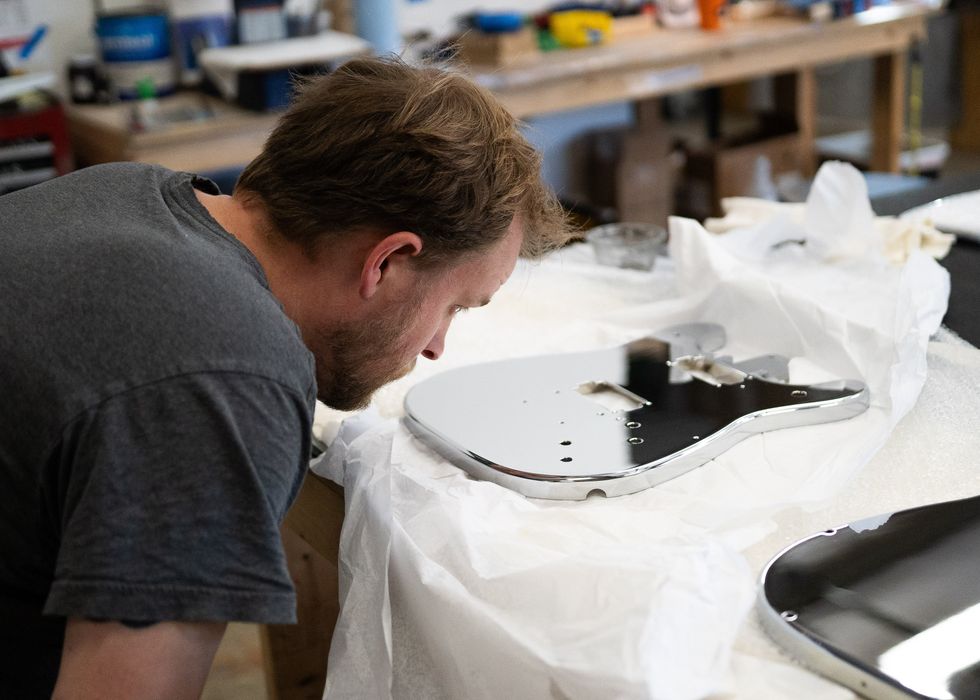
A worker inspects a fresh and shiny body at the Aluminati factory.
Steinberger’s instruments initially faced resistance from traditionalists, but carbon fiber’s undeniable benefits soon won over a legion of progressive players. Eddie Van Halen, in his relentless pursuit of technical perfection, was one of the many who embraced Steinberger guitars for their tuning stability and futuristic TransTrem bridge. And on bass, Sting and Rush’s Geddy Lee also became prominent Steinberger players. These endorsements, as well as the instruments’ undeniable performance and stability, cemented Steinberger’s legacy as a true pioneer in alternative-material guitars.
Sparked by Steinberger’s work, the 1990s witnessed a renaissance of guitar innovation. Companies like Parker, Modulus, and Zon pushed the boundaries by combining carbon fiber and various alternative materials into premium instruments. Parker Guitars, founded by Ken Parker, gained the most recognition for its Fly model, a striking instrument featuring a composite body and a carbon-fiber neck. It symbolized the future for guitarists coming up at the time. “I have a vivid memory of being 15 or 16 and going to a guitar store and seeing a Parker there,” recalls Jake Howsam Lowe of the bands Plini and the Helix Nebula. “I played it, and all I could think was, ‘This thing is insane. I love this so much!’”
The Fly’s unique combination of materials offered a balanced tone, exceptional sustain, and a lightweight feel that has yet to be matched. Everyone from eclectic, boundary-pushing wizards Adrian Belew and Vernon Reid to fingerstyle master Phil Keaggy became champions of Ken Parker’s revolutionary design.
Like Steinberger and Veleno before them, Parker Guitars may have been too ahead of their time. By the mid 2000s, the brand was on the back burner, and the guitar industry was amid a significant shift. With renewed concerns about deforestation and the dwindling supply of rosewood and mahogany, there was a new focus on the search for sustainable alternatives. Much of that energy went into the hunt for alternative woods. Bob Taylor of Taylor Guitars was at the heart of a movement to embrace non-traditional tonewoods like ovangkol, sapele, and pau ferro.
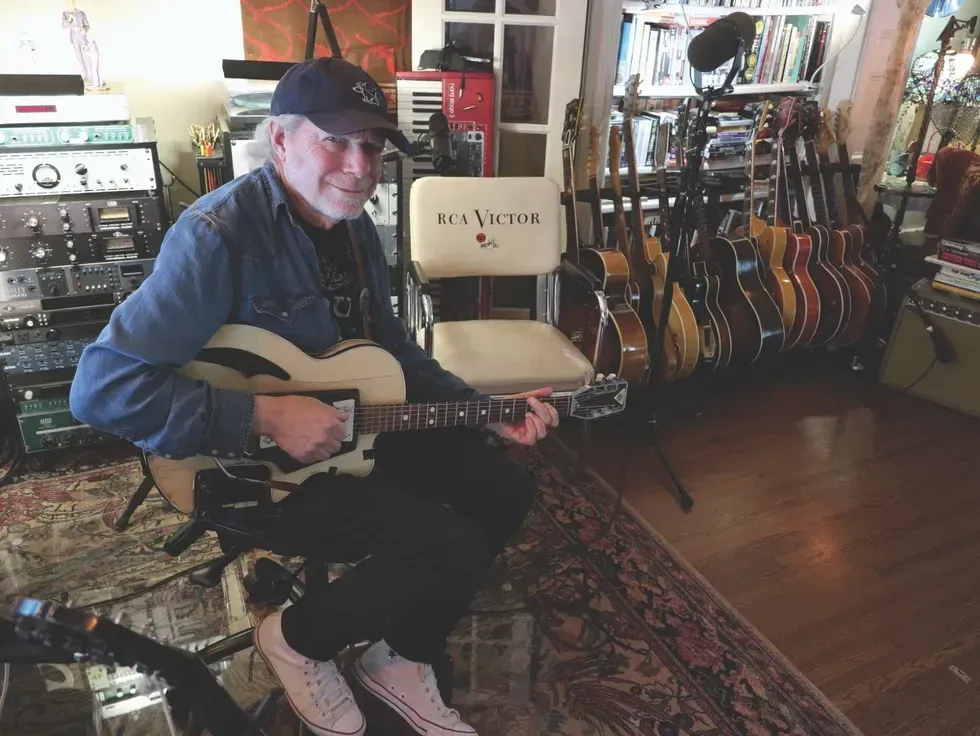
Buddy Miller in his home studio posing with a Wandre, one of the first aluminum-neck designs. Buddy has nearly single-handedly inspired a cult around these Italian exports.
Photo by Ted Drozdowski
Sustainability continues to remain a concern across the industry. Even builders who specialize in non-wood construction still rely on plenty of wood in their builds. “We do [use wood],” says Little. “Mainly, we use local poplar and maple, but we also use some sapele, and we’re looking into paulownia. It grows on farms here in the South. So we try to keep it as local and green as possible."
Little’s Aluminati Guitars is at the forefront of today’s alternative-materials movement. Though not afraid to branch into the mentioned tonewoods, Lucite, and carbon fiber, the brand is known for its all-aluminum models. “Aluminum is just the perfect thing to make a stringed instrument from,” states Little, plainly. “It just rings out like a bell.”
Aluminati’s commitment to sustainability extends beyond their choice of materials. They also prioritize how they source their materials, ensuring their instruments are as environmentally conscious as they are sonically impressive. “For example,” says Little, “a company sent us some aluminum cans from a few of their venues in the United States. We recycled those cans into some fretboards and other parts.”
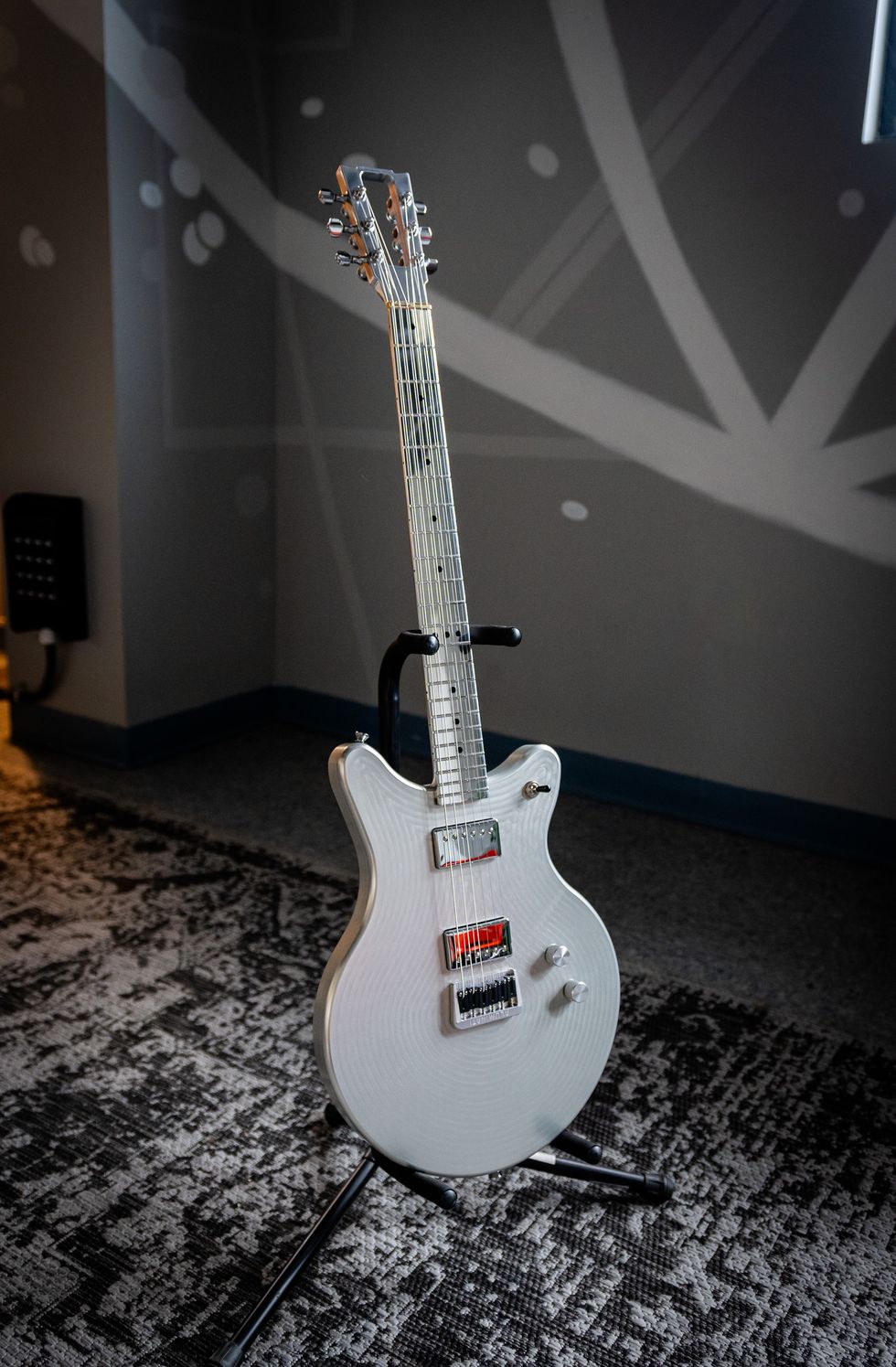
This Aluminati Nebula is all aluminum, but the model is available with customizable options, including fretboard and body material.
The contemporary guitar landscape is a tapestry of innovation and experimentation, where luthiers and musicians push the boundaries of what a guitar can be. Prisma Guitars builds instruments out of retired skateboards; German maker Verso’s minimalist designs are built using sheet metal; and luthier Rachel Rosenkrantz is challenging the conventions of what is accepted as instrument materials by using mycelium and paper within her sustainable avant-garde builds. Some builders, like YouTube-famous Burls Art, craft instruments from unexpected materials like colored pencils and Legos, transforming everyday objects into functional works of art.
Aristides Instruments is a leader in the charge for technological advancements. Engineering their own Arium composite material (a blend including thermoplastic resin and glass bubbles), Aristides crafts their instruments as a single uninterrupted piece. Each comes to life in specialized molds unique to their breathtaking designs. According to CEO Pascal Langelaar, the result is unparalleled consistency and playability. “People could see that as less romantic,” he admits, “but the benefit is that, when you play your neighbor’s guitar, you're getting the same quality [when you order your own].”
This consistency and quality control is a hallmark of the modern alternative-materials movement, offering reliability and predictability essential in today’s online-retail world. That peace of mind can be elusive with traditional wooden instruments.
Alternative materials aren’t without their unique challenges, though. Little acknowledges the hurdles, especially faced by early pioneers. “The main challenges were their weight, tuning stability, and action. They sound fantastic, but [a lot of them are] like 12 or 13 pounds. They’re always cold and have pretty raunchy tuning stability. So, we’ve had to address not only the traditional sound but also the pain points from aluminum instruments from the past.”
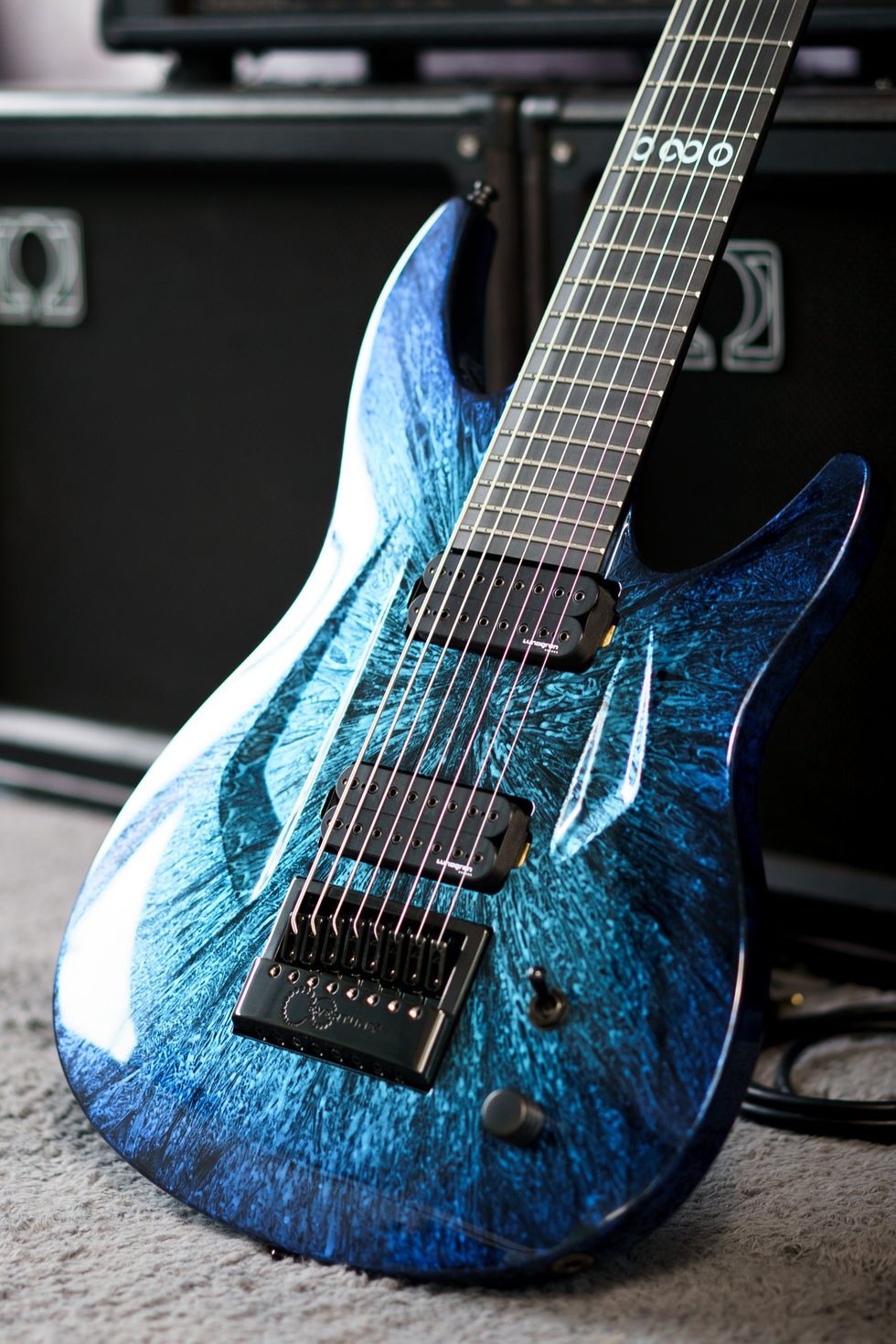
Caption: This Aristides 8-string is made from the company’s proprietary Arium composite material.
Aristides Instruments’ innovative approach to creating its own composite material helps solve these challenges. Even their finishing process is a highly technical exercise in innovation and precision. Erik Nieuwenhuisen, the company’s production manager, explains: “Once the guitars are out of the mold, they get painted on a really high level. We try to keep the paint layers extremely thin, but need to be sure that everything is really consistent.”
For decades, guitarists have remained fiercely loyal to traditional wood instruments, most viewing them as the only true path to sonic authenticity. But it seems as though players are embracing alternative materials more than ever before, a significant shift in the industry. So, what’s driving this change?
Little believes it’s a sign of the times. “I think it's the younger generation,” he says. “They want stuff that’s just kind of no-bullshit, something that works all the time when they want it to work without having to do a bunch of maintenance.”
Lowe, an Aristides devotee, echoes the sentiment. “I’m a very low-maintenance guitar player,” he explains. “And the less I have to do to my instrument, the happier I am. I think part of it also has to do with the fact that companies are just getting better.”

Luther Rachel Rosenkrantz’s Mycocaster is made of a unique combination of mycelium, recycled paper, Indian rosewood scraps, wax, and oil.
As part of Plini’s two-guitar live attack, Lowe is one of many guitarists flying the alternative-material flag while leading a new generation of fusion and metal players. According to him, online communities have also been crucial for expanding players’ horizons. Forums and social media platforms have provided a space for guitarists to connect, share their experiences, and discover new builders pushing the boundaries of design.
“Access through the internet is really important,” he says. “I remember cruising those forums and seeing guys like Misha [Mansoor of Periphery] and Nolly [Getgood of Periphery, producer] talking about nerdy guitar stuff. We all seem to start there and move out from there.”
The future of alternative material guitars rests with these newer artists, and the past two decades have seen a surge of innovation in guitar gear in large part driven by artists like Lowe, Mansoor, and Animals as Leaders, who fearlessly embrace everything from new materials to digital modeling and extended-range instruments. As Lowe says, point blank, “The rules have changed for electric guitar design.”
Langelaar also sees a bright future for alternative materials, saying, “I think there’s going to be more and more alternatives and different visions on guitar building. Aristides offers something different that speaks to people. And maybe right now it’s still a niche, but I think that niche is going to get bigger and bigger.”
Ever the innovator, Steinberger also envisions a future of refinement and evolution, but thinks it’s coming a little at a time. “I don’t think there’s a lot of revolution on the horizon,” he says. “There’s nothing quite like what happened when they put a pickup on a guitar. I mean, that was the revolution.”
There’s no denying the allure of alternative-material electric guitars. They represent a bold step into the future, a testament to the spirit of innovation, and carry a long list of benefits unmatched by traditional tonewoods. As guitar designs, these instruments stand as a reminder that the possibilities are limitless.
Whether alternative materials will eventually become the norm or remain a niche remains to be seen. But one thing is certain, the electric guitar, in all its forms, continues to evolve, driven by a relentless pursuit of new sounds, innovative designs, and the quest for musical expression.


